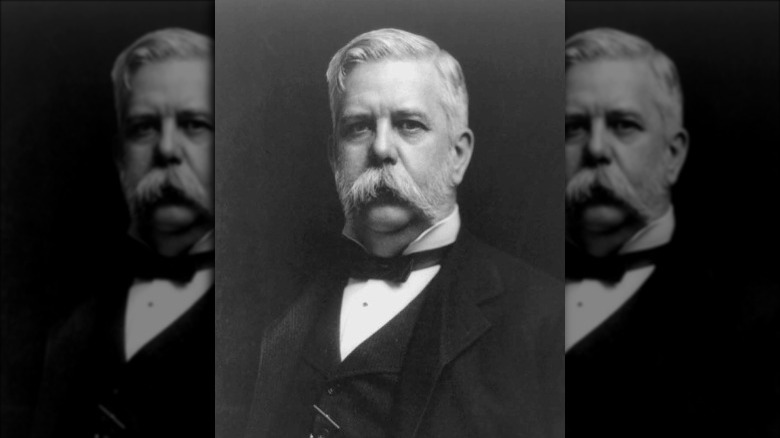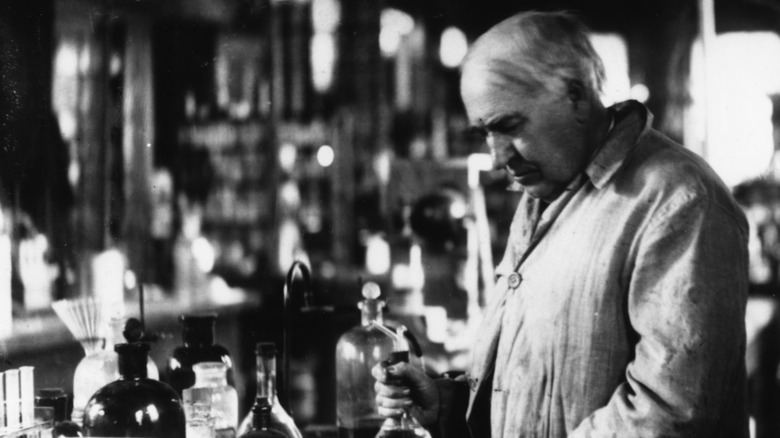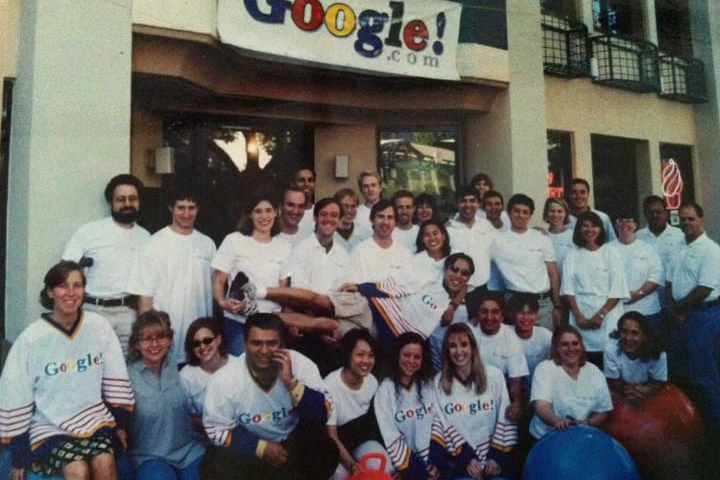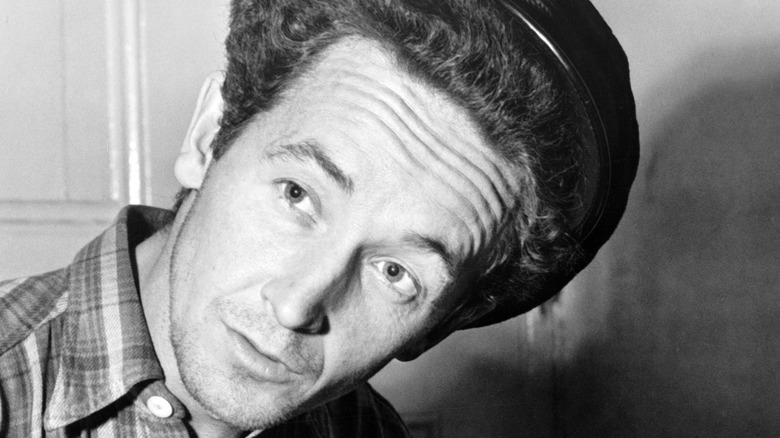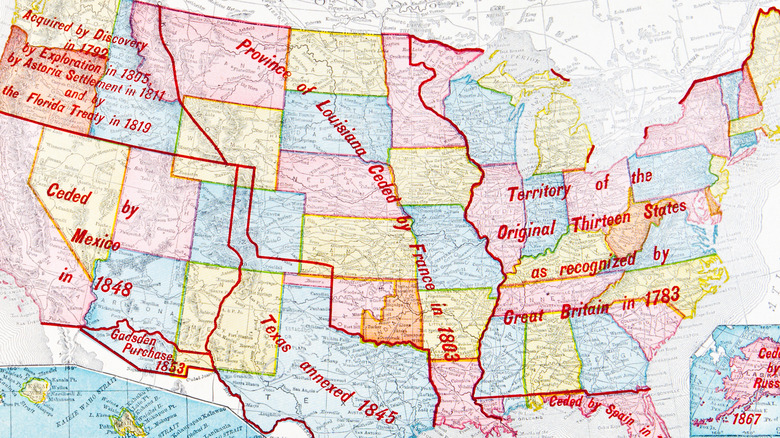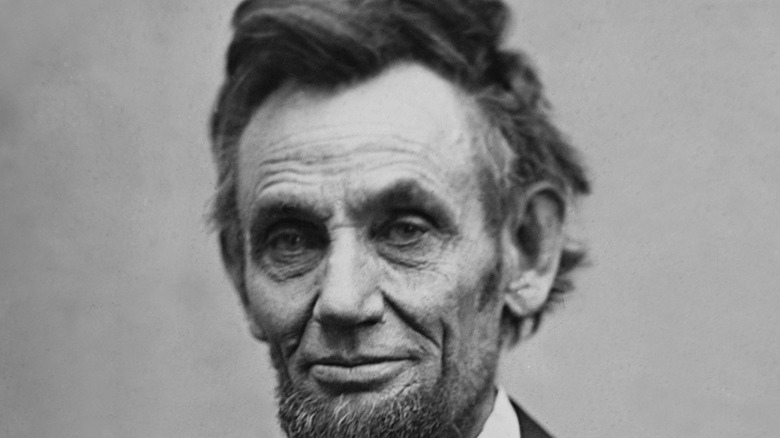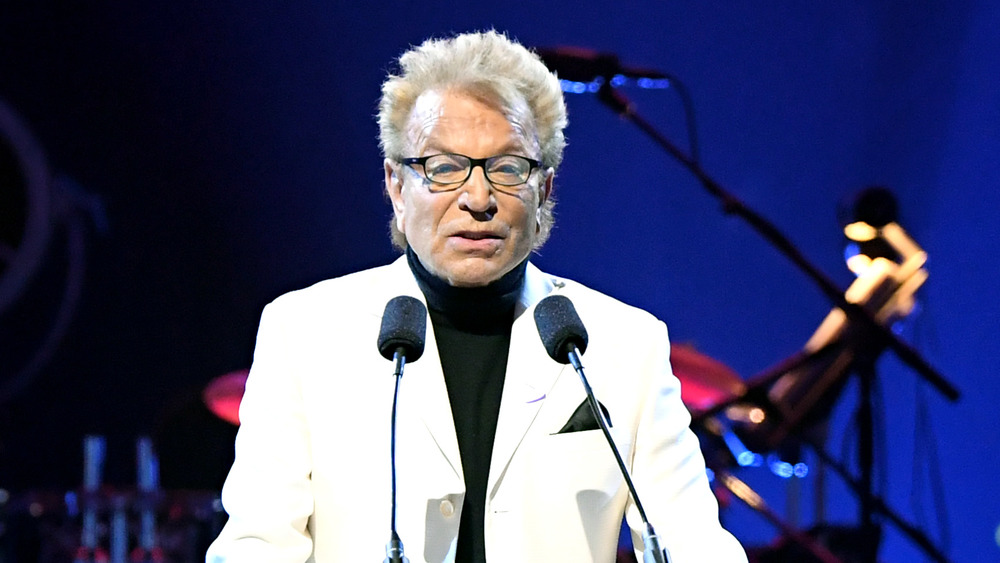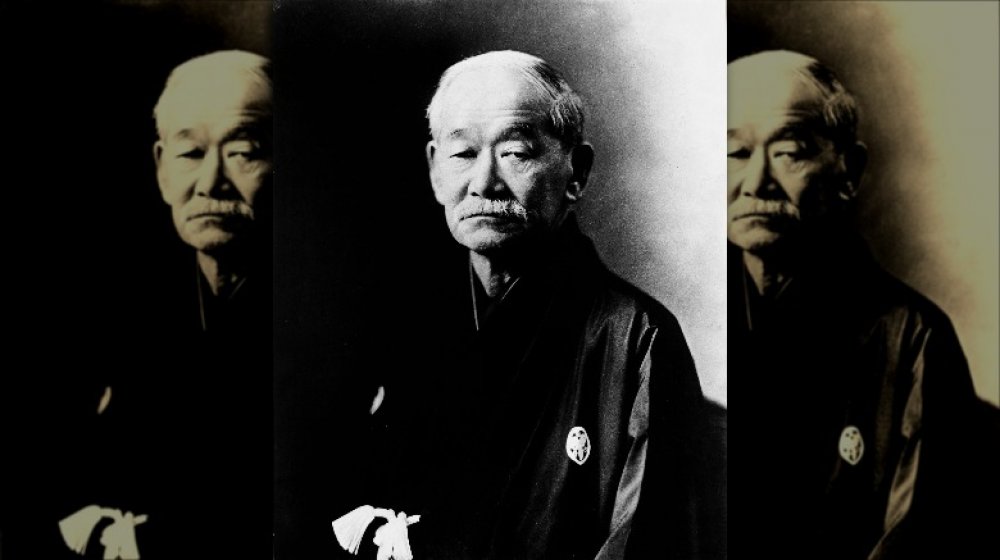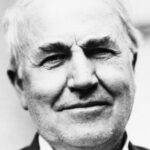
Thomas Edison’s Feud With George Westinghouse Explained
There are few inventors more widely known than Thomas Edison, and there are certainly few inventors who courted controversy as commonly as the New Jersey native. Edison is credited with helping pioneer the use of electricity in everyday life, from the light bulb to the phonograph, as well as developing direct current in electrical devices (via Smithsonian Magazine). The latter, amazingly, was the source of one of the fiercest and dirtiest business competitions in history, in what was dubbed the “Current Wars.”
As America began to adapt to electricity, one of two current systems — alternating current and direct current — needed to be adopted. It wouldn’t be logical to have both, and Thomas Edison, who pioneered direct current, knew that, as did his rivals George Westinghouse and Nikola Tesla, who were Team Alternating Current. It became a race to see which current would become accepted by the American public, netting their promoter a huge increase in public profile and profits. Due to the nature of the men involved, particularly Edison, this was not an example of good sportsmanship and friendly competition The spat saw newspaper headlines and macabre public events involving electrocuted animals that went all the way to the Supreme Court.
Westinghouse got his start inventing for the railroad
Although not as instantly recognizable of a name as Thomas Edison or Nikola Tesla, George Westinghouse played a major role in how Americans use electricity today. He came from a military background, serving in the Civil War, and began to invent things like a rotary steam engine and water meter (via Britannica). His first big invention was the railroad air brake, which became compulsory a couple of decades after it was introduced. His experience with air brakes would later influence his interest in electricity, as he developed electrical signal systems. He imported AC generators from Europe and perfected the designs of AC generators and transformers. The seeds of the Current Wars in America had been planted.
According to TIME, as the name suggests, direct current runs in a single direction, while alternating current reverses direction dozens of times a second. Edison’s conviction in DC was its superiority over AC when constructing motors, which at the time were hugely sought after to power machines and factories. AC, however, could stretch over much longer distances, making it much more practical for everyday use; the voltage can also easily be changed with a transformer. AC seemed like the superior current to many, so Edison felt he had to go on the offensive.
Edison electrocuted men and animals but not Topsy
Thomas Edison was determined to win the Current Wars at whatever cost, and even shot down Tesla’s approach to co-develop an AC-powered motor. Edison focused on painting AC and its high voltages as dangerous to consumers, writing that should any AC system be installed, a fried corpse would appear within six months. To prove this “danger,” Edison decided to demonstrate it by helping to invent the electric chair — using Westinghouse’s AC. A dog was later electrocuted, and in 1890, the first prison inmate was killed — brutally, as the initial volts didn’t kill him.
The most famous animal electrocution, however, was not Edison’s fault — at least not directly. Topsy the elephant has become a symbol of Edison’s immoral determination to win the Current Wars no matter the cost. The story typically goes that Edison electrocuted an innocent elephant in front of the public as a dramatic demonstration of AC’s danger, but this is not entirely true (via Rutgers). Firstly, Topsy was not as innocent as many were led to believe: She had killed three men and menaced the local police, and was ordered to be put down. Animal rights groups thought a hanging was inhumane, and it was suggested that the newly introduced method of death by electrocution be implemented. A Brooklyn electrical company bearing Edison’s name handled the voltage, and the grisly affair was filmed using another Edison invention, but the man himself was not present and likely completely unaware of the killing of Topsy.
Westinghouse eventually won the Current Wars
The two men’s approaches to the Current Wars were largely defined by what they thought was most important about their inventions. Thomas Edison had a user-first philosophy; he didn’t realize that the phonograph would change the music industry forever, but rather that the ability to record one’s voice meant that no one would ever have to write anything down again (via Study.com). George Westinghouse looked at his inventions from an industry and infrastructure perspective, shown in his work on railroad technology. It was this mindset that would eventually help him win the Current Wars, as AC required fewer relay stations and other physical infrastructure than his rival’s system.
When Tesla succeeded in developing an AC motor with Westinghouse, DC’s days were numbered. Westinghouse was chosen to light the Chicago World’s Columbian Exposition in 1893, signaling an end to the Current Wars and a victory for alternating current (via Britannica). AC is still used today around the world, while DC is mostly reserved for batteries. It wasn’t all bad for Edison, however, as he would continue to make some other massively influential inventions, while Westinghouse would suffer from financial crises around the turn of the century, and die with no connections to any of his businesses. Yet, it is Edison and the electrocuted bodies left in his wake that took a bigger hit in terms of legacy and reputation.
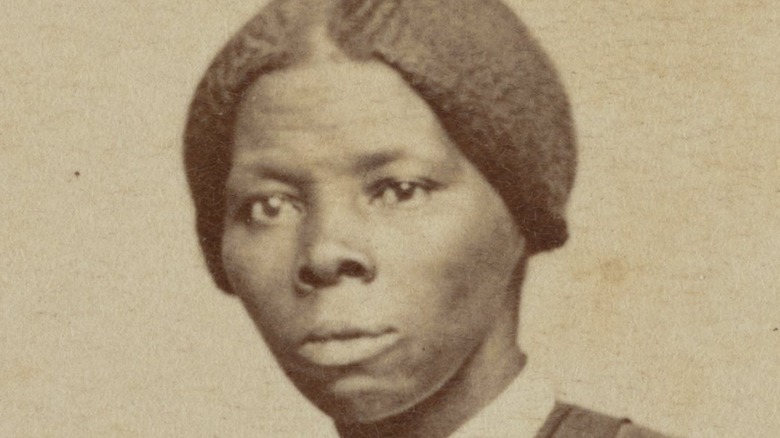
Harriet Tubman Was The First Woman To Ever Do This

The Truth About The Kid Who Invented The Snowmobile
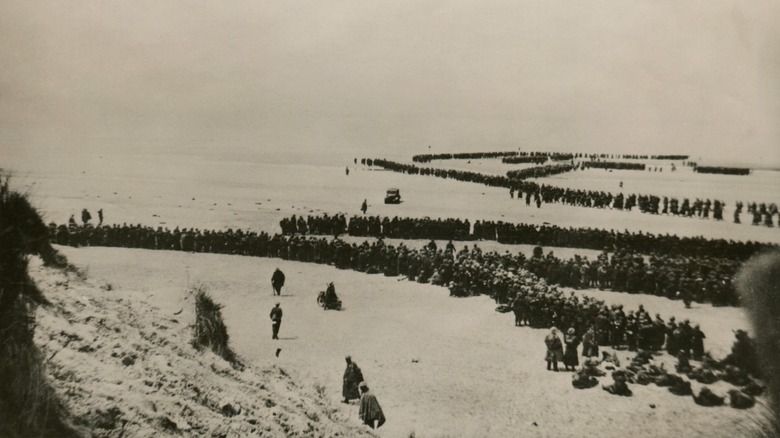
The Critical Mistake Hitler Made In The Battle Of Dunkirk

The Oldest Person To Climb Mount Everest May Surprise You

Here's What The Bible Really Says About Addiction

The Messed Up Truth Of Venezuelan President Nicolas Maduro

Could The Handmaid's Tale Ever Actually Happen?

The Hideous Fish That Was Said To Be The Cause Of Henry I's Death

The Mystery Of The Bridgewater Triangle
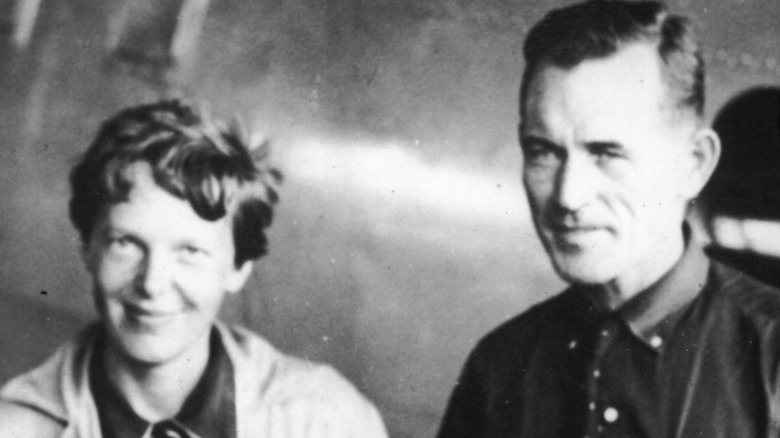
The Truth About Amelia Earhart And Fred Noonan's Relationship
